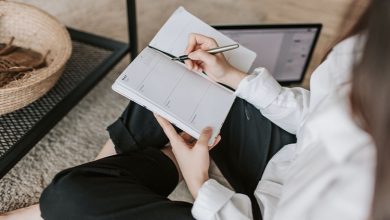Is Violin Hard To Learn? Expert Insights Revealed
The violin, with its roots tracing back to the 16th century Renaissance era, holds a storied place in music history. As the centerpiece of orchestral ensembles and quartets, its versatility has made it synonymous with both classical and chamber music. Mastering its strings is no small feat—without frets to guide finger placement, precision and meticulous practice are fundamental to producing its distinctive sound.
Embarking on the journey to learn the violin involves dedication and perseverance. It is a path filled with intricate techniques and nuances that take time to hone. Whether you are approaching the violin as a hobby or with professional aspirations, understanding the complexities involved is key to setting realistic goals and making meaningful progress.
Key Takeaways
- The violin is steeped in historical significance and is pivotal in various musical genres.
- Learning the violin is complex due to its fretless nature and technique requirements.
- Persistence and realistic goal-setting are crucial for progressing as a violinist.
Difficulty of Mastering the Violin
Playing a Bowed Instrument
The violin is a high-pitched string instrument unique in shape, played with a bow. Crafted mostly from wood, the violin’s body, neck, and bridge all contribute to its distinctive sound. The ebony wood used for the fingerboard adds resilience for constant finger pressure. The bow, traditionally made from horsehair, requires the right balance of pressure to produce the intended tone.
Renowned Challenges of Violin Playing
Playing the violin demands precision. Without frets to guide finger placement, violinists must develop a keen muscle memory. This skill, critical for finding the right pitch, takes years of dedicated practice, and reaching a professional level often spans a decade of consistent training.
Bowing Technique and Its History
Drawn from the Latin term for a stringed instrument, the violin is celebrated in orchestras for its sound and history. Producing quality sound with the bow is intricate, relying on unique pressure for each note. Successfully muting unwanted strings while playing adds to the complexity of the initial learning curve.
Fundamentals of the Violin
Once known as the fiddle in classical contexts, the violin should be held securely between the shoulder and chin. The bow, held in the right hand, demands a flexible grip. It’s crucial to balance holding the violin neck with the thumb and index base while the other fingers press the strings.
Deciphering Musical Notation
To play the violin, interpreting a variety of musical symbols, including the staff and notes, is essential. Grasping the concept of these symbols is akin to reading a new language, potentially requiring additional lessons for those new to musical notation.
Musical Comprehension as Language Learning
Learning the violin enhances musical understanding akin to acquiring a new language. It helps in boosting confidence and musical vocabulary. Regular practice, starting with shorter sessions and expanding to longer ones, is key to steady progression.
Selecting the Right Instrument and Gear
It’s important to research before investing in a violin and its accessories. An optimal starter violin quality can range from $50 to $500, while essential accessories like a bow, a case, and a tuner, collectively, may cost $300 to $500.
Utilizing Digital Learning Tools
A plethora of online resources are available for self-taught violinists, from YouTube tutorials to specialized courses. Whether through free content or enrolling in paid classes, these resources cater to various learning styles and budgets.
The Essential Need for Dedication
Consistency and perseverance are critical when learning the violin. Adopt a regular practice schedule, pacing yourself to avoid overexertion, and making sure to take adequate breaks to maintain overall well-being.
Aspiring to Professionalism
With commitment, violin playing can advance from a hobby to a viable profession, offering opportunities in performance, composition, and education. The journey to professionalism requires not only skill development but also the ability to network and seize opportunities.
The Importance of Proper Posture
Proper posture while playing is pivotal in mastering the violin. Slouching or stiffness can lead to long-term difficulties. Focus on posture is integral, and over time, with muscle strengthening, maintaining correct posture will become second nature.
Exploring the Intricacies of Violin Playing
Delving into the world of violin playing reveals not just the challenges but the true artistry behind this classical instrument. With the proper approach, dedication, and resources, you are well on your journey towards violin proficiency.
Common Inquiries About Violin Learning Difficulties
Beginning Obstacles in Violin Mastery
When you start learning the violin, challenges include getting the right posture, reading music, and mastering bow movements. Producing a pleasant sound is tricky at first. Regular, focused practice is crucial for overcoming these initial hurdles.
Time Investment for Violin Proficiency
It generally takes several years to achieve proficiency in violin. Individual progress varies, with daily practice, you might notice significant advancements within a few months to a couple of years.
Self-guided Learning Effectiveness for Violinists
Learning the violin on your own is possible, with many resources available online. However, guidance from a skilled teacher can significantly enhance the effectiveness of your learning.
Comparative Difficulty of Violin and Piano Learning
Both the violin and piano have unique challenges. The violin requires precise intonation and bowing technique, while the piano demands coordination of both hands and understanding of complex harmonies.
Impact of Guitar Experience on Learning the Violin
Prior guitar experience may aid in understanding music theory and finger positioning, but the techniques for bowing and posture are distinct to the violin and will require separate practice.
Beginner-Friendly Verdict: Violin or Guitar
The guitar is often considered more beginner-friendly due to its immediate rewarding sound. The violin demands careful technique to produce a pleasing tone, making it a more challenging choice for beginners.




